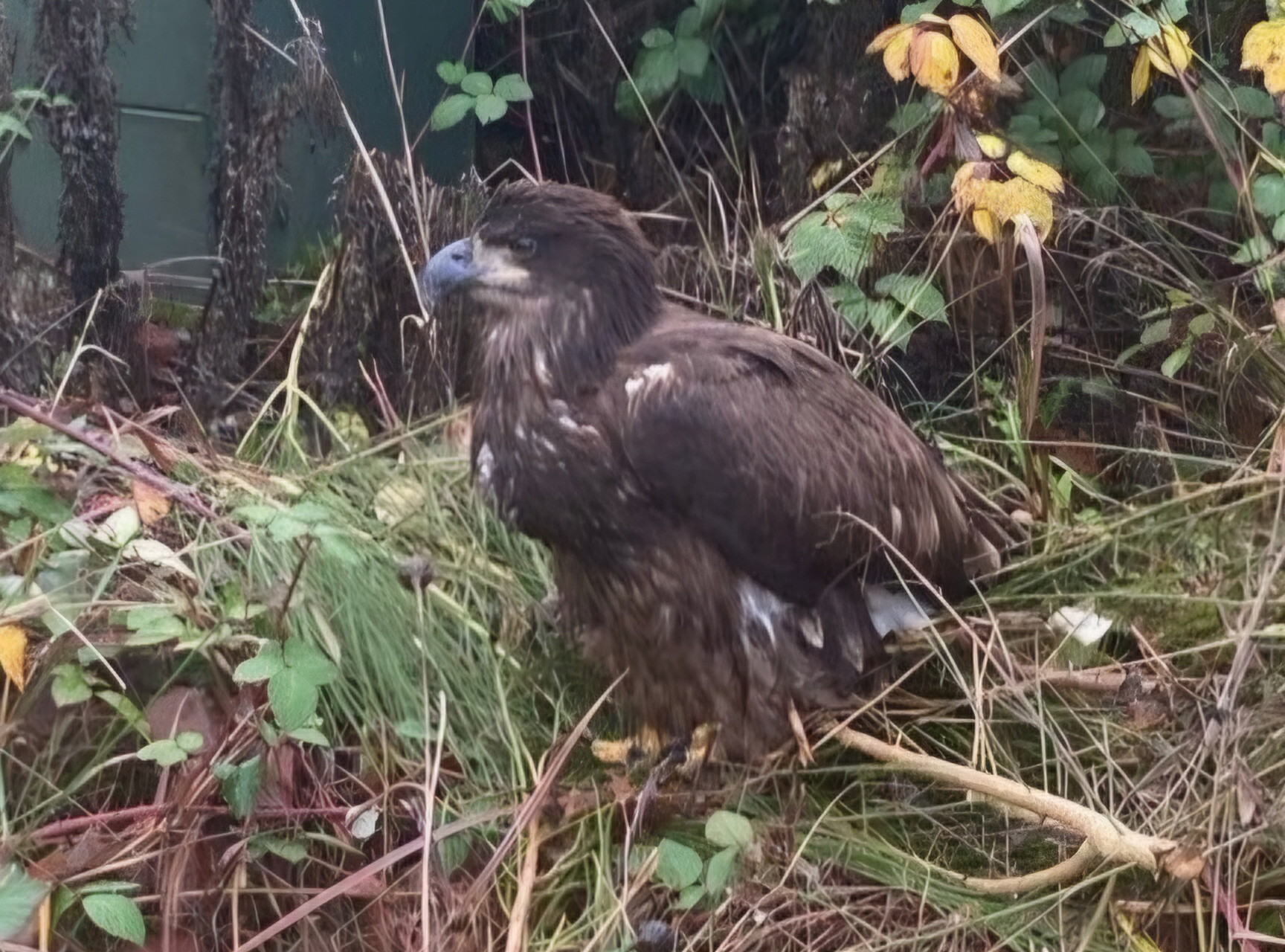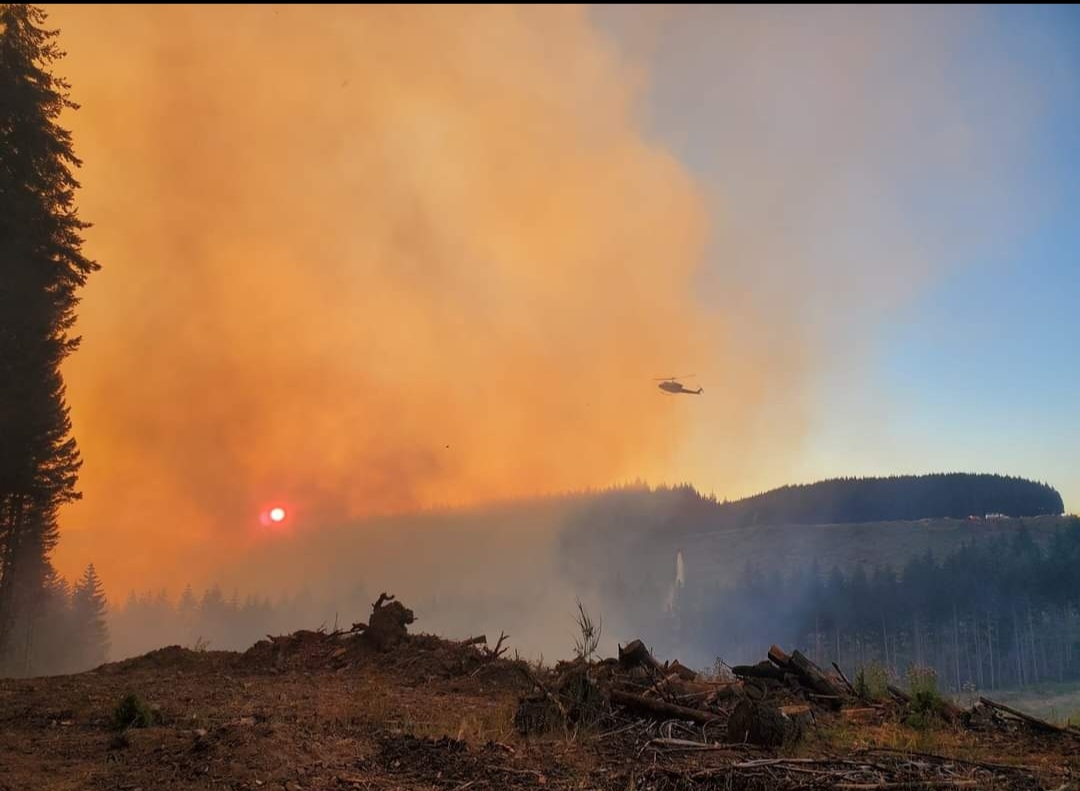
Downstream view of the Saline River. The 80-mile waterway runs through southwest Arkansas and a significant portion of our timberlands. It’s a popular destination for recreationists and is home to various endemic and rare fish and aquatic species.
Removing a damaged crossing on Arkansas’ Saline River this past December was one of those projects that’s a win all around: For Weyerhaeuser, for the Arkansas Game & Fish Commission (AGFC), for the Arkansas Department of Agriculture’s Natural Resources Division (NRD), for recreationists and for aquatic species.
The Saline River is a picturesque 80-mile waterway that flows entirely within Arkansas, including through vast portions of our timberlands. It’s a popular destination for boaters and floaters, and the river is also home to various rare aquatic species — including freshwater mussels and leopard darters, a minnow-sized fish — that now have unimpeded access to 25 miles of habitat with the barrier removed.
This project was one of several barriers we voluntarily removed in southwest Arkansas in collaboration with the AGFC. Thanks to funding from a U.S. Environmental Protection Agency grant through the NRD Nonpoint Source Pollution Program, there was no cost to the company for the removal, which also reduced our liability on an unneeded crossing while improving aquatic connectivity. And the work resulted in a notable practice during our external Sustainable Forestry Initiative® audit.
The legacy crossing over the Saline River that was once used to connect our timberlands had fallen into disuse. It was damaged recently when a trespasser drove a heavy load over it. Erected in the 1970s, the concrete structure relied on small culverts to allow fish passage, which is no longer considered a best practice.
FINDING COMMON GROUND
Work to remove the crossing started more than a year earlier, in November 2021. Richard Stich, Southern Timberlands environmental affairs manager based in Hot Springs, reached out to the AGFC to identify common goals and areas where we might collaborate.
The discussions soon turned to the agency’s participation in the Arkansas Stream Heritage Partnership and the Southeast Aquatic Resources Partnership, which seek to identify and remove aquatic barriers.
“We homed in on four or five crossings on the Saline and Robinson Fork Rivers,” says Tim Burnley with AGFC. “We toured several in those watersheds, looking for a low-hanging fruit, a win-win, to get started.”
The barrier on the Saline River, originally built in the 1970s, was identified during those on-site visits in the summer of 2022. The crossing had been previously damaged when a trespasser drove a heavy load over it, leaving it an unusable safety hazard. The concrete structure had also been designed with small culverts to allow fish passage, which is no longer a best practice (and which also prevented passage for boaters and anyone else on the water).
The crossing mid-demolition. It took about a week to demolish and haul away the concrete.
“Agreeing to remove the barrier was a quick decision,” says Clay Mangum, Southern Timberlands environmental management systems manager based in De Queen. “It was clear this was a great start to our partnership, and we hope it will be a catalyst for similar projects across Southern Timberlands that will strengthen relationships with important agency partners, promote safety and improve passage for aquatic organisms.”
AGFC led the grant-writing process to secure funding from the NRD’s Nonpoint Source Pollution Program, which funds projects like this one that improve water quality — in this case, by reducing sediment runoff from unpaved roads — and improve habitat for aquatic species. Our teams completed permitting with help from AGFC. By December, AGFC crews were on site with two trackhoes, one mounted with a demolition hammer.
The Saline River with the legacy crossing removed.
A WEEK OF DEMOLITION AND RESTORATION
It took almost a week to chip away at the concrete crossing and haul the materials to an approved storage site. Once the crossing debris was removed, the contractor installed a rock vane in the riverbed to direct water toward the middle of the river. They planted native trees and shrubs on the riverbanks to encourage streambank stability and prevent erosion.
Clay and several of his team members, including Daniel Hanks, aquatic ecologist with the Southern Environmental Research team, shared details about the project with Weyerhaeuser colleagues at a meeting of the Southern Environmental Team in Hot Springs.
“We have about 34,000 stream crossings across our southern region,” Daniel says. “Most are constructed using culverts, but there are some bridges and fords. As we move forward, we’re using data such as stream classification, watershed size, climate and at-risk aquatic species to develop a strategic plan to effectively and efficiently evaluate stream crossings to improve aquatic connectivity, increase our infrastructure resilience, and reduce future financial burdens.”
The team believes this successful collaboration between Weyerhaeuser and Arkansas conservation agencies can serve as a valuable model for addressing legacy crossings that no longer meet our standards.
“I was able to incorporate some of this group’s cross-functional collaboration work into the Southern Timberlands Roads Program Manual, which was a great unintended benefit,” Daniel says.
Trackhoes prepare to remove the old crossing over the Saline River. Arkansas Game and Fish Commission employees operated the equipment to remove the crossing. Removal was funded through the U.S. Environmental Protection Agency and granted through NRD.
Additional projects are already being planned based on this model, such as removing an obsolete dam in Virginia, which is tentatively scheduled for early 2024.
“Strategic spatial planning — where we objectively identify our own stream crossing and infrastructure priorities, understand the priorities of our conservation partners, and recognize where the two overlap — is an efficient way to protect at-risk species on our properties,” Daniel says. “Not just in the South, but everywhere we own timberlands. And the effective execution of this approach all begins with developing and fostering our internal and external relationships and partnerships.”
Tate Wentz from the Arkansas Department of Agriculture Natural Resources Division and leader of the Arkansas Stream Heritage Partnership discusses the benefits of removing the crossing, including improved access to upstream habitat for several rare fish and freshwater mussel species.
A FUTURE OF COLLABORATION
In fact, when SFI auditors called out this project as a notable practice in their external audit, they cited our team’s willingness to reach out to state officials proactively. SFI standards emphasize the importance of collaboration between private companies, state officials and other stakeholders in protecting and preserving natural resources.
And our Arkansas team continues to build on this collaborative relationship with state officials. Two more barriers on the Saline River have been removed this year, reconnecting 23.3 miles of habitat.
“As we like to say, ‘It’s teamwork for stream work,’” says Tim Burnley of the AGFC. “Although this project may seem local in scope, it has regional implications. When Weyerhaeuser takes the lead, other landowners take notice. We’re confident it will inspire others to step up and support streams and waterways in Arkansas and throughout the South.”


